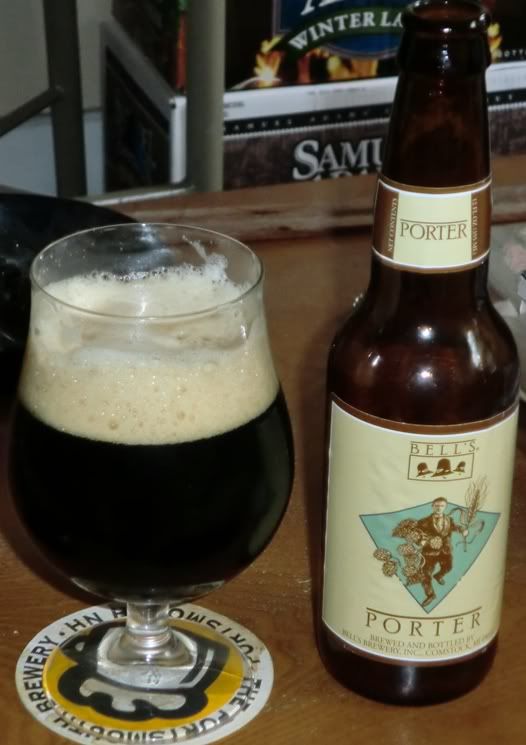
Become immersed enough in beer geek culture and you eventually reach a layer of people who don't just look down on Bud Light Lime, they look down upon American craft beer pioneer Samuel Adams, scorning it for being a mass-produced, too-popular line of beers. The beer is bland and safe and populist, they say. It's boring and watered down and not adventurous, they say. After all,
everyone can get Samuel Adams and almost
anyone can like it. It's just mass-produced beer masquerading as crafted, they say. And I suppose they have something of a point ...
But you know what?
Every time I have Samuel Adams I'm reminded why I came to like them in the first place. (For the record, when I first got into craft beer too many years ago to mention, it was Sam Adams, Sierra Nevada, Brooklyn, and Yuengling that paved the way.) It's true they almost never make the best beer in their chosen style, or even rank supremely high in each style they brew. Their
Boston Lager remains the definitive American lager in part because very few American brewers do lagers these days, sure, but little of what they do inspires hardcore beer geeks to say, "This is frickin' outstanding!"
They do "solid" beers, rarely "extreme," and for many beers snobs "solid" isn't good enough. These days, people want BIG.
But so what if they don't knock it out of the park with every beer? Even if we set aside the fact that
Jim Koch and the Boston Beer Company have been pioneering so-called "extreme beers" for many years, from 1994's
Triple Bock to their rare and sought after
Millennium to the highly expensive
Utopias (one of the strongest real fermented beers in the world) to the ground-breaking brew experiment of
Infinium (which may have failed in taste but which broke big new ground in the brewing process), the fact is that Samuel Adams produces a
slew of styles each year, and they're almost always decent examples of the beer style in question. Not the best, maybe. Sometimes not even great. But rarely (with the exception of the unfortunate fruit lambic that shall remain unnamed) ever approaching outright
bad, and often approaching pretty damn good. Their
Black Lager,
Holiday Porter,
Noble Pils,
Scotch Ale,
Octoberfest and others are nice (and sometimes awesome) examples of each style.

And they continue to experiment with higher end brews, too. Their
Barrel Room Collection is made up of big beers blended with a special, unreleased beer they call Kosmik Mother Funk. You can see great photos of their barrel room
here, taken by fellow beer geek Jason Jammallo. They do an
Imperial series that can be hit-or-miss, but hits well when it does hit. They even do a number of one-time,
tap-only beers. For as long as they've been around they keep trying new things. They keep experimenting. They keep trying to broaden what they do.
As other bloggers
point out, Samuel Adams no longer
has to do stuff like this. They're the largest of the craft brewers. They're well known. Recognizable. A really big frickin' fish in the small pond of craft beer. They don't
need to keep pushing themselves. But they do.
And this isn't even getting into how they helped
bail out many microbrewers during the
2008 hop shortage, the way their annual
Longshot contest supports homebrewing (did you know every Samuel Adams employee is given a homebrew kit upon employment?), or how they offer
loans to startup breweries.
These guys are awesome.
I write this after having ignored their new Rustic Saison and East-West Kolsch all summer long. Finally broke down and got the last summer variety pack in my shop, though, because after some 17 years of drinking Samuel Adams beer I didn't want to let these two slip past without at least giving them a shot.
And they were good. The saison was bright and a bit funky (but not much) and had some nice spice. It was a good saison. I've had better, but dammit, it's a good introduction to the style for someone new to saisons, and for old vets it's still a good, refreshing beer. Same with the Kolsch. Clean, crisp, tasty. The best? No. But who cares?
Excellent way to show beer drinkers, "This is the Kolsch style of beer" and make sure it's available to millions.
That's freakin' great. And it's just one of many reasons for beer snobs to stop being pricks about Samuel Adams.
Visit my personal website or check out my independent editorial services at Your Awesome Editor.
 Evvvverybody loves Bell's Brewery, one of the best breweries in the Midwest (and yet oddly only the second best in their own state, after Founders). It's easy to see why in the rare opportunities I have to enjoy their beer. I'm in New Jersey, you see, and Bell's doesn't make it here. I have to get their stuff courtesy of friends like Jim McDevitt (also my coauthor). When I have, it's generally been excellent. Bell's are probably best known for their Two-Hearted Ale and summer favorite Oberon, not to mention the beer geek lust of Hopslam.
Evvvverybody loves Bell's Brewery, one of the best breweries in the Midwest (and yet oddly only the second best in their own state, after Founders). It's easy to see why in the rare opportunities I have to enjoy their beer. I'm in New Jersey, you see, and Bell's doesn't make it here. I have to get their stuff courtesy of friends like Jim McDevitt (also my coauthor). When I have, it's generally been excellent. Bell's are probably best known for their Two-Hearted Ale and summer favorite Oberon, not to mention the beer geek lust of Hopslam.





